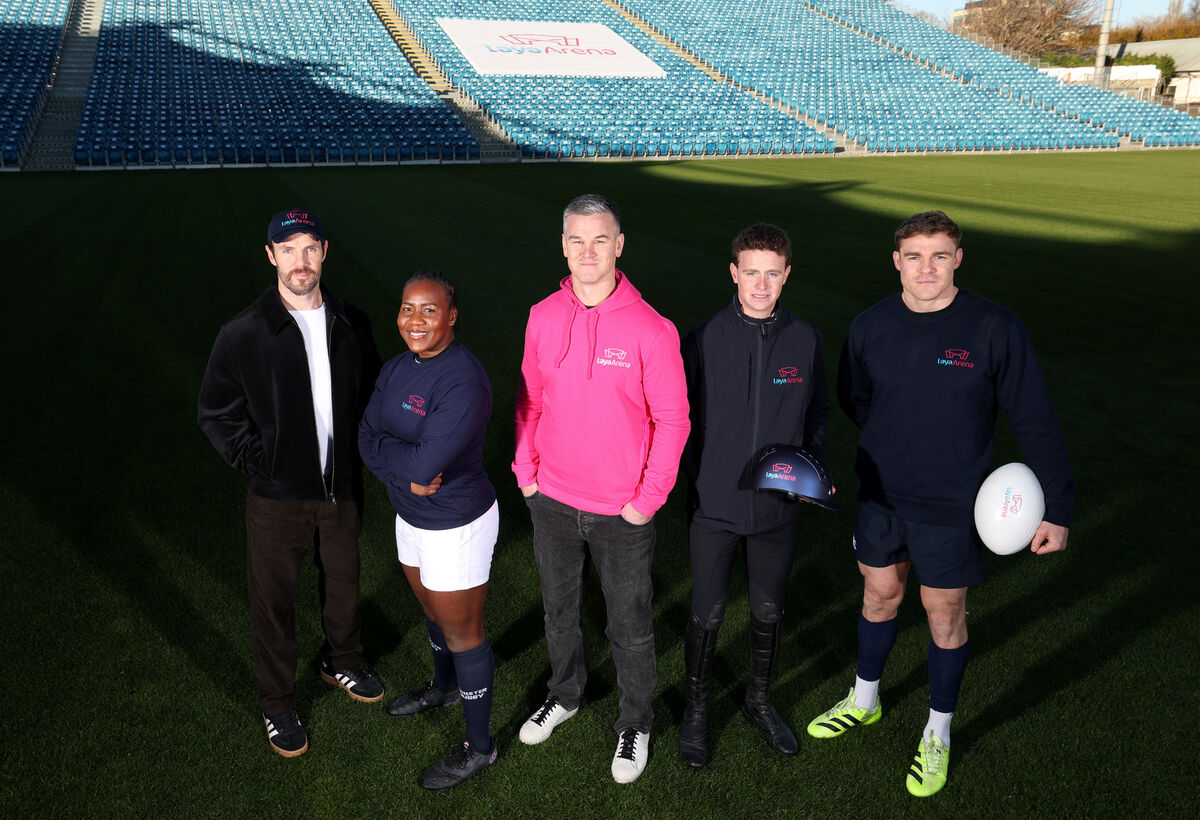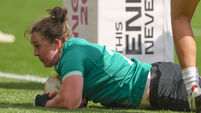Ringrose and rugby still getting to grips with tackle interpretations

Ireland’s Garry Ringrose and Sacha Feinberg-Mngomezulu of South Africa clash off the ball. Pic: ©INPHO/Gary Carr
There aren’t many players in modern rugby with a better grasp than Garry Ringrose as to just how thin the line is between a perfectly-pitched tackle and a whole heap of trouble.
The Leinster, Ireland and British and Irish Lions centre has made an art of shooting from the defensive line and isolating ball carriers behind the gain line, the delivery of his forceful hits allying with his speed of movement to put an attack firmly on the back foot.
Ringrose’s speed of thought doesn’t always result in a hit. There are times when even a missed tackle can succeed in diverting an opponent enough to stymie the attack and give teammates the time and opportunity to cover and avert the danger seconds later.
He knows what makes a good tackle, basically, and he knew that Sacha Feinberg Mngomezulu’s attempt in stopping Tommy O’Brien after six minutes of the Ireland-South Africa game last Saturday was anything but.

His enraged reaction said as much.
“I probably was a bit animated after that and potentially should have checked on Tommy to make sure he was all right. Thankfully he was. These things happen in the game. I did a high shot against Wales when I was in the last Six Nations and got the card.
“It's a tough spot for referees to be in. There is the blessing and the curse of being able to slow it down and loads of different replays. It's a tough old gig being a ref. I don't think I'd last long if I was in the middle. I do feel for them from that perspective.”
The Springbok’s No.10’s effort was unacceptable, but Ringrose knows that even the most honest attempt at a tackle can go awry, and that the results of even the smallest miscalculation can be considerable.
It’s two-and-a-half years since an attempt tackle on Scotland’s Blair Kinghorn saw him make contact with his head on the wrong hip, knocking him unconscious. It’s nine months since his attempt on Wales’ Ben Thomas earned him a yellow upgraded to a 20-minute red.
The introduction of the 20-minute red hasn’t sat well with everyone. For all the boos that rang around the Aviva Stadium as Matthew Carley handed out five cards to Ireland, the decision to deem James Ryan’s clearout offence a 20-minute offence by the officials was plain wrong.
That merited a straight, old-fashioned red.
Ringrose’s transgression in Cardiff this year was less egregious, but it was another example of Ireland benefiting from the new law given Bundee Aki replaced him in the midfield and played such a huge role in getting Ireland over the line in a game they had been expected to cruise.
The Leinster centre doesn’t give the rights or wrongs of that regulation much thought, not in public anyway, but the variation in decisions by officials in penalising questionable tackles is clearly something that is causing confusion.
Witness the call not to hand a card to Feinberg-Mngomezulu last Saturday.
“Over the last number of years you definitely have to be more conscious irrespective of cards and 20 minutes,” said Ringrose. “It is a fine line because it's not about being aggressive but doing what's best for the team at any moment.”
All sorts of language is used to adjudicate. Was there an attempted wrap? What was the degree of danger? Was it passive or aggressive? Was there a clear line of sight? Did the ball carrier dip or change direction suddenly? Did the high contact start from a lower base?

It’s a complicated area in a complicated sport.
“You're trying to thread that line to do what's best for the team but then be as controlled as possible. It can be tough but, again, it makes it a good challenge too. It's funny, some of the language stuff. as a player, I don't get too caught up in it.
“I know the captains and leaders maybe need to be able to talk to the referees in the right ways and say the right things. But as a player, you're only ever just trying to thread that line of helping the team but then being as controlled as possible so that you don't make contact with the head, or wrap, or all these different things that do come into play.
“So you'd be practising them, in training, consciously practising, but a lot of it would be before training and after to just get reps and just repetition after repetition of doing the right things. So, in the heat of the moment, that's what you kind of fall back on.”













